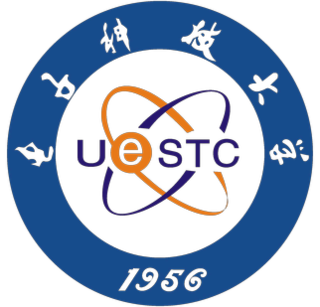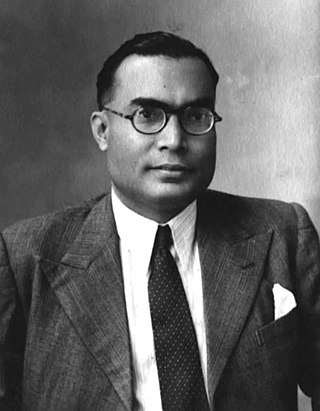
John Clarke Slater was a noted American physicist who made major contributions to the theory of the electronic structure of atoms, molecules and solids. He also made major contributions to microwave electronics. He received a B.S. in Physics from the University of Rochester in 1920 and a Ph.D. in Physics from Harvard in 1923, then did post-doctoral work at the universities of Cambridge (briefly) and Copenhagen. On his return to the U.S. he joined the Physics Department at Harvard.

Cochin University of Science and Technology (CUSAT) is a state government-owned autonomous university in Kochi, Kerala, India. It was founded in 1971 and has three campuses: two in Kochi and one in Kuttanad, Alappuzha, 66 km (41 mi) inland. The university awards degrees in engineering and science at the undergraduate, postgraduate and doctoral levels.
Federal Institute of Science And Technology (FISAT) is a private, self-financing engineering college, established and run by the Federal Bank Officers' Association Educational Society (FBOAES). It is one of the top private engineering colleges in Kerala. It is an initiative of the Federal Bank Officers' Association (FBOA), the sole representative body of the entire officers of the Federal Bank. FISAT is accredited by NBA and NAAC.

The University of Electronic Science and Technology of China (UESTC) is a national public research university in Chengdu, Sichuan, China. It was founded in 1956 instructed by the Premier Zhou Enlai. UESTC was established on the basis of the incorportation of electronics divisions of then three universities including Jiaotong University, Nanjing Institute of Technology, and South China Institute of Technology. UESTC was supported by the Double First Class University Plan, 985 Project and 211 Project of China. Now UESTC is a multidisciplinary research university with electronic science and technology as its nucleus, engineering as its major field, and featured with management, liberal art and medicine.

Alexander A. Balandin is an electrical engineer, solid-state physicist, and materials scientist best known for the experimental discovery of unique thermal properties of graphene and their theoretical explanation; studies of phonons in nanostructures and low-dimensional materials, which led to the development of the field of phonon engineering; investigation of low-frequency electronic noise in materials and devices; and demonstration of the first charge-density-wave quantum devices operating at room temperature.
Mahendra Singh Sodha, popularly known as M. S. Sodha, is an Indian physicist specialising in Plasma, Optics and Energy and a former vice chancellor of Lucknow University, Devi Ahilya University and Barkatullah University. A 1974 winner of the highest Indian science award, Shanti Swarup Bhatnagar Prize, Sodha was honoured by the Government of India again in 2003 with Padma Shri, the fourth highest Indian civilian award.
Prasenjit Sen is a professor at the School of Physical Sciences of Jawaharlal Nehru University, New Delhi, India.
Chennupati Jagadish, an Indian-Australian physicist and academic, is the President of the Australian Academy of Science, and a Distinguished Professor of Physics at the Australian National University Research School of Physics. He is head of the Semiconductor Optoelectronics and Nanotechnology Group which he established in 1990. He is also the Convener of the Australian Nanotechnology Network and Director of Australian National Fabrication Facility ACT Node.
Onkar Nath Srivastava was an Indian material physicist, an Emeritus professor of Banaras Hindu University and the vice president for India and South Asia of the International Association for Hydrogen Energy, who is known for his contributions to the disciplines of nanotechnology and hydrogen energy. He is the author of two books and over 440 scientific papers and a recipient of several honors including Shanti Swarup Bhatnagar Prize, the highest Indian award in the science and technology categories. The Government of India awarded him the fourth highest civilian honour of the Padma Shri, in 2016, for his contributions to science and engineering.
Suhash Chandra Dutta Roy is an Indian electrical engineer and a former professor and head of the department of electrical engineering at the Indian Institute of Technology, Delhi. He is known for his studies on analog and digital signal processing and is an elected fellow of all the three major Indian science academies viz. Indian Academy of Sciences, Indian National Science Academy, National Academy of Sciences, India as well as the Institute of Electrical and Electronics Engineers, Institution of Electronics and Telecommunication Engineers, Systems Society of India and Acoustical Society of India, The Council of Scientific and Industrial Research, the apex agency of the Government of India for scientific research, awarded him the Shanti Swarup Bhatnagar Prize for Science and Technology, one of the highest Indian science awards for his contributions to Engineering Sciences in 1981.
Surendra Prasad is an Indian communications engineer, a former director and an Usha chair professor of the Indian Institute of Technology, Delhi. He is also an emeritus professor of Bharti School of Telecommunication Technology And Management, a joint venture of IIT Delhi and is known for developing new techniques, algorithms and hardware in signal processing. He is an elected fellow of all the three major Indian science academies viz. Indian Academy of Sciences, Indian National Science Academy and the National Academy of Sciences, India. as well as the Indian National Academy of Engineering. The Council of Scientific and Industrial Research, the apex agency of the Government of India for scientific research, awarded him the Shanti Swarup Bhatnagar Prize for Science and Technology, one of the highest Indian science awards for his contributions to Engineering Sciences in 1988.

Anurag Sharma is an Indian physicist and a professor at the department of physics of the Indian Institute of Technology Delhi. He is known for his pioneering researches on optoelectronics and optical communications and is an elected fellow of all the three major Indian science academies viz. Indian Academy of Sciences, Indian National Science Academy and National Academy of Sciences, India as well as Indian National Academy of Engineering. The Council of Scientific and Industrial Research, the apex agency of the Government of India for scientific research, awarded him the Shanti Swarup Bhatnagar Prize for Science and Technology, one of the highest Indian science awards for his contributions to Engineering Sciences in 1998.

Ioan-Iovitz "Iovitzu" Popescu is a Romanian physicist and linguist, emeritus professor at University of Bucharest, Faculty of Physics, and member of the Romanian Academy. In the field of physics, he is best known for his work on gas discharges and plasma physics, as well as his collaborations with Denisa Popescu in laser spectroscopy. He also had pioneering contributions in the field of gamma-ray lasers with Carl B. Collins and Silviu Olariu.
Biswa Ranjan Nag was an Indian physicist and the Sisir Kumar Mitra chair professor at Rajabazar Science College, University of Calcutta. Known for his research in semiconductor physics, Nag was an elected fellow of Indian National Science Academy and Indian Academy of Sciences. The Council of Scientific and Industrial Research, the apex agency of the Government of India for scientific research, awarded him the Shanti Swarup Bhatnagar Prize for Science and Technology, one of the highest Indian science awards for his contributions to Physical Sciences in 1974.
Thomas Edwin Nevin was an Irish physicist and academic who had a distinguished career in the field of molecular spectroscopy. He was Professor of Experimental Physics and Dean of the Faculty of Science in University College Dublin from 1963 to 1979.

The University College of Science, Technology and Agriculture are two of five main campuses of the University of Calcutta (CU). The college served as the cradle of Indian Sciences by winning the Nobel Prize in Physics in 1930 and many fellowships of the Royal Society London.

Aristos Christou is an American engineer and scientist, academic professor and researcher. He is a Professor of Materials Science, Professor of Mechanical Engineering and Professor of Reliability Engineering at the University of Maryland.

Prof. Siddheshwari Prasad Chakravarti was an Indian engineer, researcher, and educator. He was known as the father of electronics and telecommunications engineering in India.

Edl Schamiloglu is an American physicist, electrical engineer, pulsed power expert, inventor, and distinguished professor in the Department of Electrical and Computer Engineering at the University of New Mexico. He has been known in public media for his expertise in the design and operation of directed-energy weapons. He is also known for his assessment on the possible origins of alleged health damages presumably caused on U.S. embassy personnel in Cuba in 2016 as part of the Havana syndrome incident. He is the Associate Dean for research and innovation at the UNM School of Engineering, where he has been a faculty since 1988, and where he is also Special Assistant to the Provost for Laboratory Relations. He is also the founding director of the recently launched UNM Directed Energy Center. Schamiloglu is a book author and co-editor, and has received numerous awards from prestigious bodies for his academic achievements. He is a Fellow of the Institute of Electrical and Electronics Engineers and the American Physical Society.










